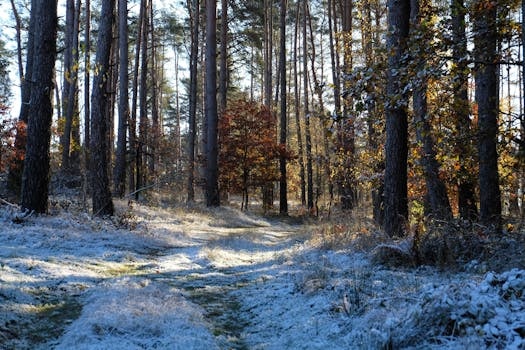The Rise of Residential Food Forests: Edible Landscaping Trend
For centuries, traditional gardening and landscaping methods have focused on creating solely ornamental and aesthetically pleasing outdoor spaces. However, a new trend has emerged in recent years – the concept of residential food forests. This innovative approach to gardening combines the beauty of traditional landscaping with the functionality of providing a sustainable source of food.
What is a food forest?
A food forest is a type of garden that mimics the structure and function of a natural forest ecosystem. It includes a variety of plants such as trees, shrubs, vines, herbs, and vegetables that work together to create a diverse and self-sustaining ecosystem. The main goal of a food forest is to imitate the layers of a forest – from the tall canopy trees to the low-growing ground cover – in order to maximize productivity and efficiency.
The rise of residential food forests
The concept of food forests is nothing new – it has been practiced by indigenous communities for centuries as a way to cultivate food in a sustainable and environmentally friendly manner. However, the idea of implementing food forests in residential areas has gained popularity in recent years.
One of the main reasons for this upward trend is the growing concern about the impact of industrial agriculture on the environment. Modern agriculture practices, such as monocropping and the use of chemical fertilizers and pesticides, deplete the soil of nutrients and contribute to the loss of biodiversity. As a result, many people are turning to alternative methods of growing food, and food forests offer a viable solution.
Edible landscaping
Another contributing factor to the rise of residential food forests is the increasing popularity of edible landscaping. This is the practice of incorporating edible plants into traditional ornamental landscaping. Edible landscaping not only adds to the aesthetics of a space but also provides a source of nutritious food.
Food forests take edible landscaping to the next level by creating a more self-sustaining and productive ecosystem. By mimicking the structure of a natural forest, food forests can produce a larger variety and quantity of food in a smaller space. This makes it ideal for urban and suburban areas where garden space is often limited.
Benefits of residential food forests
There are numerous benefits to implementing a food forest in a residential setting. Firstly, food forests are low-maintenance, as they require minimal weeding, watering, and fertilizing once established. This is because the plants in a food forest work together to create a self-sustaining ecosystem, reducing the need for human intervention.
Food forests also promote biodiversity by incorporating a wide variety of plants. This helps to attract beneficial insects, such as pollinators, and reduces the risk of pest infestations. Additionally, the deep root systems of the trees and plants in a food forest help to improve soil health, preventing erosion and nutrient depletion.
Moreover, food forests provide a sustainable source of food. In a society where food insecurity is a growing issue, having the ability to grow one’s own food is of great importance. Food forests can provide a variety of fruits, vegetables, and herbs, reducing the need for purchasing produce from the grocery store.
Implementing a food forest
Creating a residential food forest does require careful planning and design to ensure optimal growth and production. It is important to consider factors such as sunlight, water availability, and the types of plants that will thrive in the specific climate and location.
Additionally, it is essential to choose plants that work well together and provide a balanced ecosystem. For instance, certain plants attract beneficial insects that help to pollinate and control pests, while others contribute to soil health with their deep root systems.
In conclusion, the rise of residential food forests is a positive trend that addresses both environmental and societal issues. By creating a more sustainable and self-sufficient way of growing food, food forests offer a solution to the increasingly important task of feeding a growing population. With the added benefit of being aesthetically pleasing, it is no wonder that more and more people are incorporating food forests into their residential landscapes. So, why not join the movement and consider implementing a food forest in your own backyard?









